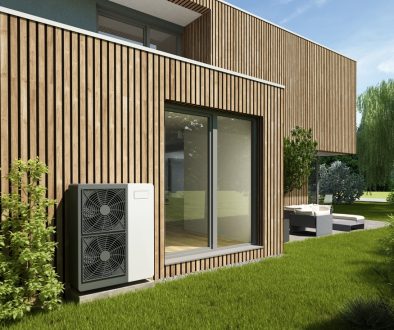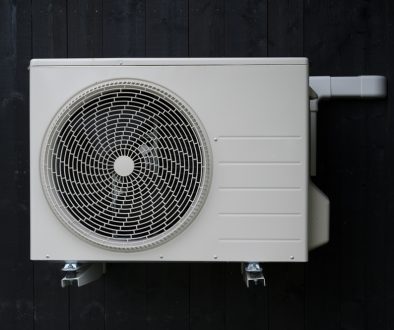Sustainable HVAC design: what is the future outlook?
Sustainable HVAC design (heating, ventilation and air conditioning) currently represents one of the most crucial new frontiers in today’s construction industry.
In an era marked by increased environmental awareness and the urgent need to reduce greenhouse gas emissions, air conditioning, heating and ventilation systems play an essential role in determining a building’s carbon footprint.
Considering that buildings are responsible for around 40% of global energy consumption and 36% of energy-related CO₂ emissions, the optimisation of HVAC systems provides the opportunity to make a genuine contribution towards environmental sustainability targets.
Principles of sustainable HVAC design
Energy efficiency is the cornerstone of any sustainable HVAC system. This factor is central to the system’s ability to provide comfortable temperatures and optimal air quality, while consuming the least energy possible.
The contemporary approach to HVAC design combines various strategies to maximise this parameter:
- appropriate system size: an over-large system is not only a waste in terms of initial costs, but such systems often operate below capacity, reducing overall efficiency. A detailed analysis of the building’s energy requirements enables the appropriate size of components to be selected;
- smart zoning: the division of the building into separate thermal zones enables the specific management of air conditioning in occupied areas only, avoiding energy wastage in unused areas;
- advanced control: energy management systems, known as Building Management Systems (BMS), constantly optimise how the HVAC systems operate, according to the internal and external conditions, occupancy profiles and user preferences.
When evaluating an HVAC system’s sustainability, its entire lifecycle should be taken into account, from the production of the components to its eventual disposal. This holistic approach includes:
- LCA evaluation (Life Cycle Assessment): analysis of the system’s environmental impact over its entire lifecycle (production of the components, installation, operation and disposal);
- choice of sustainable materials: preference for components made from recyclable materials, with a low environmental impact and without toxic substances, such as high global warming potential (GWP) refrigerants;
- disposal planning: planning to facilitate the recovery and recycling of components at the end of the system’s lifecycle.
The design phase of a sustainable HVAC system must also involve careful consideration of the building’s bio-climatic features. The inclusion of the following passive air conditioning strategies enables the load on mechanical systems to be significantly reduced:
- optimal building positioning: to maximise sun exposure in winter and minimise it in summer;
- high performance building shell: thermal insulation, low heat loss windows, shade devices;
- natural ventilation: exploitation of combined ventilation and the chimney effect to reduce the need for mechanical ventilation.
The role of ASERCOM in ecological design and sustainable regulation
ASERCOM (the Association of European Refrigeration Component Manufacturers) has a key role in supporting HVAC industry interests concerning European sustainability regulation. The association plays an active part in the European Ecodesign Forum. This key initiative was set up by the European Commission in October 2024 with Commission Decision (EU) 2024/2779, in order to support implementation of the new Ecodesign for Sustainable Products Regulation (ESPR).
This forum is a platform for various stakeholders (including industry representatives, experts from various member states, private citizens and academics), who contribute to the formulation of ecodesign standards and ESPR working plans. Through this platform, ASERCOM has identified a range of key areas relevant to the HVAC industry.
One significant cause for concern regards the necessary materials for sustainable HVAC design, especially steel and aluminium. Classification of these materials according to the ESPR could lead to disadvantages affecting the European manufacturers’ supply chain, particularly in the case of systems built outside the EU. The European Commission has recognised these concerns and provided assurance that the impact of these market imbalances will be taken into account.
Regarding the prevention of the destruction of unsold products, it is important to note that HVAC products are not included in the ‘consumer equipment’ category, as defined by the ‘Directive on the sale of goods’, because they are classified as B2B products. This distinction is essential for the application of regulations relating to the management of stock remaining in the warehouse.
In the context of repairability and recycled content, ASERCOM highlighted the crucial importance of the purity of the materials used in components in which refrigerants circulate, such as copper and steel. The association also considers hermetically sealed devices intrinsically un-repairable: an important point for the definition of future repairability requirements, which will be applicable as part of the broader regulations planned for 2026/27, with further rules on recycled content expected by 2028.
As for the Digital Product Passport (DPP), ASERCOM is monitoring developments to ensure regulatory conformity and efficiency, noting that for products covered by the Energy Labelling Regulation, the existing energy label could be sufficient, (which would eliminate the potential need for an additional digital passport).
A brilliant future that needs attention
Sustainable HVAC system design is therefore a rapidly evolving field, characterised by the introduction of innovative technologies, holistic approaches to sustainability and advanced digital tools. The sector’s future will be determined by its ability to combine energy efficiency, comfort for building occupants and a reduced environmental impact, in a context of growing environmental awareness and strict regulatory requirements.
The adoption of a systemic approach (viewing the building as a complex organism, in which HVAC systems interact with the building’s shell, occupant behaviour and the external environment, is key to the successful design of truly sustainable solutions. Only by adopting such a comprehensive approach can an efficient contribution be made to the transition to a zero emission construction industry, while respecting the need for comfort, wellbeing and functionality in living spaces.
The role of organisations like ASERCOM in the dialogue with European institutions will be essential to ensure that future regulations regarding ecodesign are able to properly balance sustainability requirements with the need for industrial competitivity, thereby contributing to a successful green transition for the HVAC sector.
Translated by Joanne Beckwith







